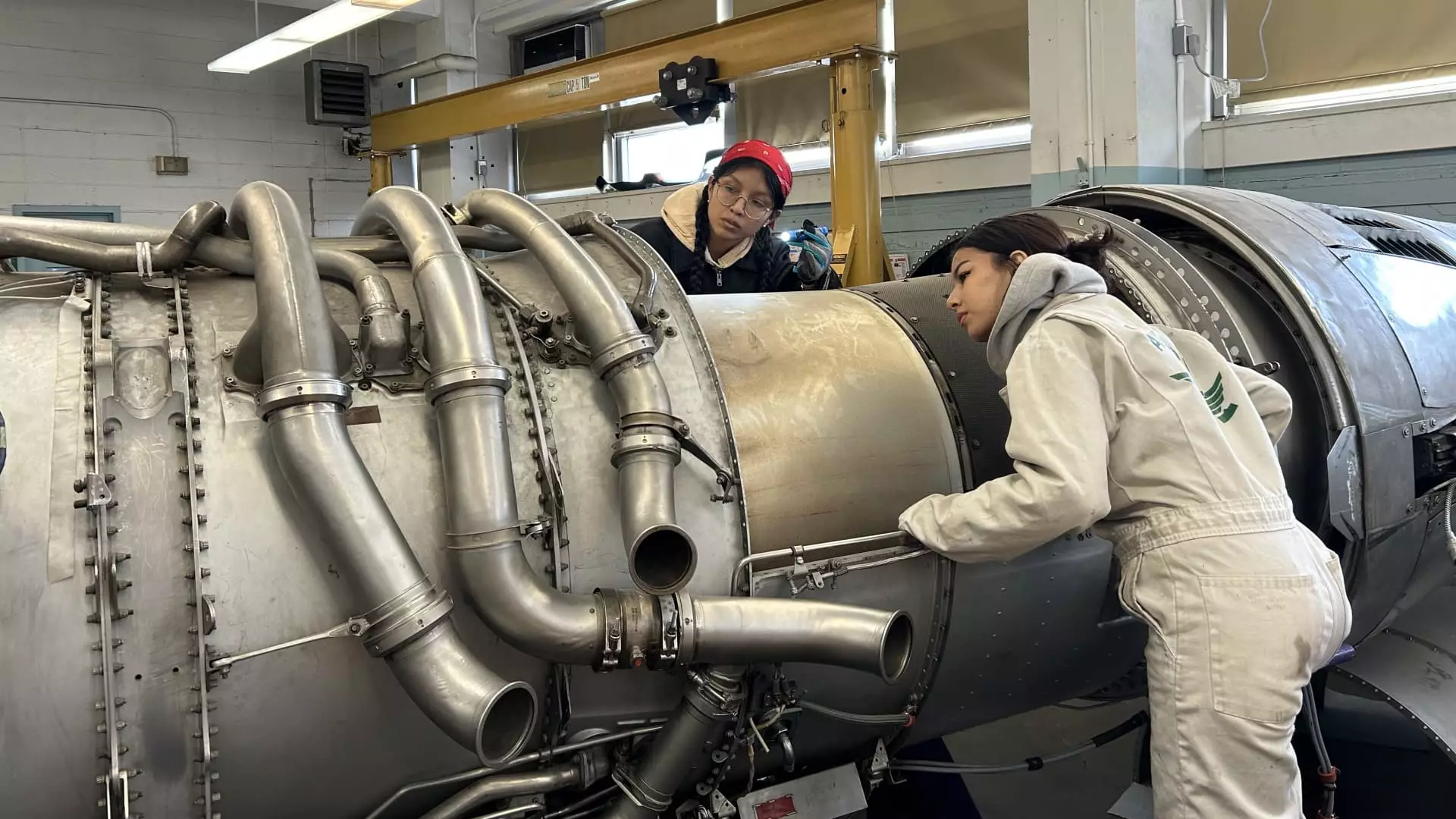The American manufacturing sector is struggling to maintain its legacy amidst a significant workforce crisis, and the aviation industry stands at the epicenter of this storm. President Donald Trump’s commitment to reviving jobs in manufacturing is noble but complicated, especially when we consider the dire state of skilled labor shortages afflicting industries like aerospace. The latest report from the Aviation Technician Education Council and consulting group Oliver Wyman reveals alarming statistics that suggest more than just temporary setbacks. With 40% of certified aircraft mechanics aged over 60 and the average age hovering at 54, time is not on our side. The impending loss of expertise will create a daunting shortfall of 25,000 technicians by 2028. It begs the question—how did we let this happen, and what can be done to change course?
The Aging Workforce: A Hidden Crisis
This crisis is not merely about numbers; it reflects a culture that has undervalued skilled labor for decades. Many of the technicians currently working are remnants of the glory days in the ‘80s and ‘90s when aviation was a booming career path. Now, as they approach retirement, we are left with a significant skills gap—and therein lies the challenge. Companies like American Airlines are feeling the crunch, with their Chief Operating Officer David Seymour emphasizing the math behind the problem: you can only lose so many seasoned workers before operational capability begins to dwindle. When experienced staff are offered early buyouts—an unfortunate side effect of the pandemic—those left behind often lack the necessary training and experience to step into these roles.
Market Dynamics and Job Availability
The demand for air travel has rebounded post-COVID, yet the labor market has not kept pace. GE Aerospace’s Chief HR Officer Christian Meisner captures the grim reality of our situation. The industry was aggressively expanding before the pandemic, and the abrupt freeze on hiring resulted in precious talent evaporating as layoffs became the norm. The irony is that while the median pay for aircraft technicians is around $79,140—a figure significantly higher than the national median income—those wages alone won’t suffice to attract the younger workforce needed. The challenge extends beyond monetary compensation; it’s about reviving interest in what many consider a dying trade.
Geographic Challenges and the Call for Adaptation
The geographical immobility of workers presents another layer of complexity. As Harvard’s Gordon Hanson points out, labor markets in manufacturing are often parochial. The challenge is not merely one of wages or interest—it’s about winning hearts and minds in local communities about the value of these jobs. Many view manufacturing as an old-world trade; they associate it with the manual labor of a bygone era when jobs were often less glamorous and more physically demanding. What’s needed is a concerted effort from industry leaders to reshape public perception. Kicking off initiatives to promote skilled trades in schools is vital; these jobs today are about advanced technology and innovation rather than assembly lines and grease.
Investing in Education: The Path Forward
With schools like Aviation High School in New York funneling students into aviation careers, there lies potential for a renaissance in interest in the field. The allure of fast-track certifications, such as FAA licenses, is pulling some students away from the traditional four-year degree path. As young aspirants like Sam Mucciardi illustrate, passion fuels their enthusiasm for hands-on work. His late evenings spent working on aircraft signal hope for the future of aviation. But can these programs alone feed the demand for skilled labor?
Changing Technological Landscape and Employment Appeals
There’s no denying that the high-tech nature of today’s manufacturing jobs differs greatly from the industry’s historical image. The role of technology in aviation—from precision machining to exotic coatings—ought to be front and center in recruitment efforts. Companies like GE are already employing sophisticated techniques that would undoubtedly intrigue tech-savvy youth. American Airlines has recognized this need to start early, even introducing initiatives in junior high schools to build enthusiasm for aerospace careers. Such proactive measures could be pivotal.
The Future of American Workforce: Manufacturing Reimagined
As we stare down the barrel of an impending skilled labor crisis, what becomes clear is that a complacent approach will doom American manufacturing. The interplay of aging workers, the need for amplified education, and a cultural renaissance around skilled labor forms the bedrock of a comprehensive solution. The stakes are high, not only for the aviation industry but for America’s manufacturing sector as a whole. If policymakers, educators, and industry leaders can collaborate to uplift this narrative, it may just rewrite the future of American employment and innovation. We need to galvanize a workforce renaissance—our economic power depends on it.


Leave a Reply